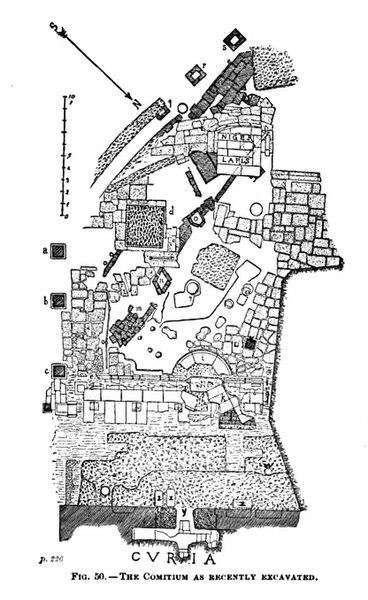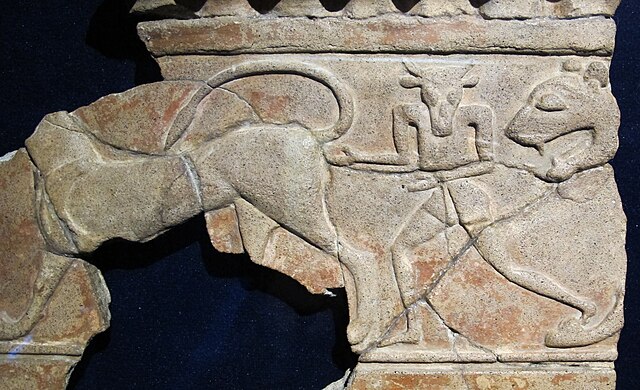The Comitium was the original open-air public meeting space of Ancient Rome, and had major religious and prophetic significance. The name comes from the Latin word for "assembly". The Comitium location at the northwest corner of the Roman Forum was later lost in the city's growth and development, but was rediscovered and excavated by archaeologists at the turn of the twentieth century. Some of Rome's earliest monuments; including the speaking platform known as the Rostra, the Columna Maenia, the Graecostasis and the Tabula Valeria were part of or associated with the Comitium.
Archaeological drawing of the excavations of the Comitium in 1899. This is the current level exposed today.
The Roman Forum, also known by its Latin name Forum Romanum, is a rectangular forum (plaza) surrounded by the ruins of several important ancient government buildings at the centre of the city of Rome. Citizens of the ancient city referred to this space, originally a marketplace, as the Forum Magnum, or simply the Forum.
Surviving structures: Tabularium, Gemonian stairs, Tarpeian Rock, Temple of Saturn, Temple of Vespasian and Titus, Arch of Septimius Severus, Curia Julia, Rostra, Basilica Aemilia, Forum Main Square, Basilica Iulia, Temple of Caesar, Regia, Temple of Castor and Pollux, Temple of Vesta, Rostra Augusti, Umbilicus Urbi, Milliarium Aureum, Lapis Niger, Basilica of Maxentius
Plan of the Forum
The Forum Romanum: view facing north east from above the Portico Dii Consentes
Fragment of a terracotta frieze plaque from the Regia at the east end of the Forum showing a minotaur and felines, c. 600–550 BC, Antiquarium Museo del Foro Romano





